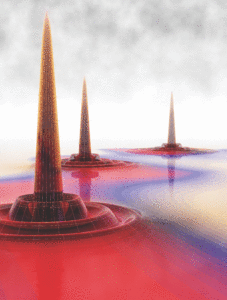Paul Berman (Emeritus) Steven Cundiff (Physics, ECE), Parag Deotare (ECE), Mackillo Kira (ECE, Physics), Pei Cheng (PC) Ku (ECE), Kevin Kubarych (Chemistry), Alex Kuzmich (Physics), Zetian Mi (ECE), John Monnier (Astronomy), Ted Norris (ECE), Georg Raithel (Physics), Duncan Steel (ECE, Physics), Liuyan Zhao (Physics)
Summary (Prepared by Ted Norris)
Michigan has a wide range of research activities under way in the areas of quantum optics (where the electromagnetic field is quantized) and photonics (meaning the applications of light in energy, information transport and processing, communications, propagation and detection or sensing where the field may be classical or quantum but the physical device is nearly always governed by quantum mechanics). Michigan photonics has research in more than four major fields of basic and applied science in this area including semiconductor nanostructures (with current emphasis shifted from III As to III-nitrides), 2D and correlated electron materials, single photon 1 dimensional photonic crystals and microcavities (with active and passive elements), and Rydberg atoms.

The research activities above that are aimed at developing our fundamental understanding to serve as the basis for five major areas for technology development: quantum gates for quantum information processing (e.g., computers, repeaters, etc), quantum memories, quantum information transport and quantum communications, quantum sensing, and quantum photonics for chemistry. The intersection of the specific materials and technologies with their quantum applications were discussed in some detail. A few selected examples include: the application of III-nitride nanostructures to artificial photosynthesis and solar fuels generation; the concept of entanglement processing units to see new and emergent collective quantum processes; light wave excitations for single-femtosecond-time-scale processing; coherent control of quantum optical processes in semiconductors and novel materials; single photon manipulation of single a quantum dot exciton in chiral waveguides for quantum gates; application of 2D materials for multidimensional photon cluster generation; excitonic photonics; chip-scale quantum photonics; control of quantum optical propagation in multimode and scattering systems; molecule-cavity strong coupling for quantum photonic control of chemistry; Rydberg atoms for quantum networks and for quantum metrology; and quantum photonics of 2D and correlated electron materials.
